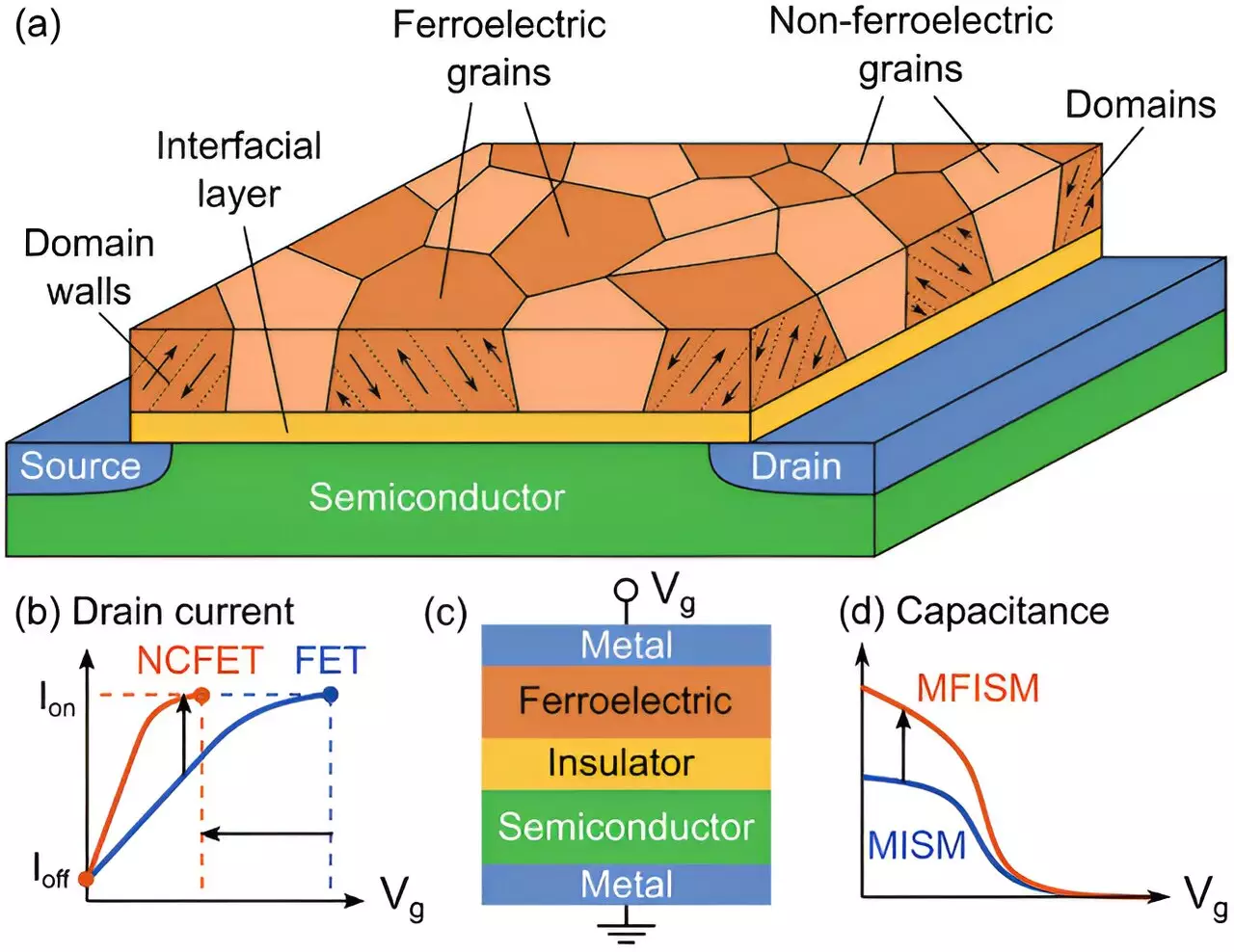In today’s technological climate, smartphones possess capabilities that would astonish anyone from the early 1990s when supercomputers ruled the computing world. However, as we delve deeper into the realms of artificial intelligence and the Internet of Things (IoT), the demand for innovative microchips has never been greater. This burgeoning need has prompted researchers at Berkeley Lab to rethink transistors, enhancing their performance while simultaneously addressing energy consumption. The prospect of employing negative capacitance in transistors opens exciting avenues for achieving greater efficiency in electronic devices.
As our daily lives integrate more smart devices and systems, the current silicon-based microchips must evolve. The reality is that the growing demand for devices necessitates not only faster processing speeds but also significant improvements in energy efficiency. Existing technologies are reaching their limits, and to break through these barriers, researchers aim to engineer transistors capable of working at ultra-low voltages while delivering superior performance. Traditional semiconductor technology simply cannot meet these heightened expectations, and a shift toward new materials and methodologies is essential.
Central to this endeavor is a phenomenon known as negative capacitance, which challenges the conventional understanding of capacitive materials. Typically, capacitors store charge but require increasingly higher voltages to do so. Negative capacitance, in contrast, allows certain materials to store significantly more charge with less voltage. This property arises in specific materials known as ferroelectrics, which have unique atomic structures that enable enhanced charge storage and data processing capabilities. Understanding the intricate mechanisms behind negative capacitance is crucial for harnessing its full potential in microelectronics.
The innovative research at Berkeley Lab revolves around a collaborative model that combines comprehensive materials science with advanced computational techniques. The development of FerroX, a sophisticated open-source 3D simulation framework, demonstrates a significant step toward deepening our understanding of negative capacitance. This framework permits researchers to simulate and manipulate the properties of ferroelectric materials, focusing specifically on how different atomic arrangements, or phases, affect performance. Lead researchers, Zhi (Jackie) Yao and Prabhat Kumar, have ingeniously spearheaded this advancement, showcasing how targeted simulations can expedite the refinement of materials.
FerroX has already proven to be a monumental tool, facilitating insights into the atomic-level origins of negative capacitance. By utilizing the power of the NERSC’s Perlmutter supercomputer, the team was able to execute complex simulations, enhancing their understanding of ferroelectric thin films and their behaviors. This type of research underlines the importance of interdisciplinary collaboration in the lab, uniting mathematicians, materials scientists, and engineers in pursuit of breakthroughs that could reshape microelectronics.
The implications of these advancements are profound. By optimizing the structure of ferroelectric materials to amplify the negative capacitance effect, Berkeley Lab scientists have unlocked a pathway toward creating more efficient transistors. This optimization process involves reducing the size of ferroelectric grains and aligning them to facilitate desired electrical properties. Notably, the team’s findings mark a departure from previous theoretical models, which lacked the ability to customize and explore the necessary design parameters.
As the research progresses, there are ambitious plans to extend FerroX’s capabilities beyond individual components to model entire transistors holistically. This comprehensive perspective is poised to lead to the design of next-generation microelectronics that are not only faster and more efficient but also transformative in their energy usage.
In summation, the groundbreaking work conducted at Berkeley Lab encapsulates a pivotal moment in the evolution of microelectronics. The exploration of negative capacitance in ferroelectric materials signifies a shift toward a new realm of possibilities in energy efficiency and device performance. As researchers continue to exploit the unique properties of these materials through innovative computational frameworks like FerroX, the future heralds promising prospects for industry applications. Ultimately, the fusion of theoretical knowledge with practical applications could pave the way for revolutionary advancements in technology, shaping the devices of tomorrow into more powerful, energy-conscious counterparts that align with the demands of an increasingly interconnected world.

